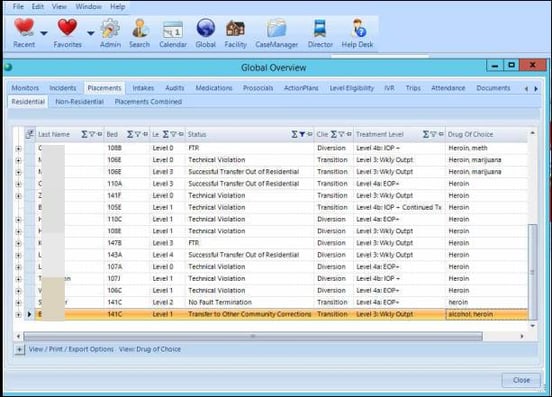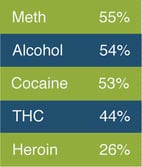As part of a mission to improve success rates and decrease technical violations and escapes, Time to Change Community Corrections (TTC) has turned its treatment team meetings into training and growth development meetings under the guidance of Evan Crist, Psy.D., founder of CorrectTech. Dr. Crist is leading a shift in culture and organizational change by educating his staff members using TTC’s own data to help equip them on this mission.
I attend these meetings and am happy to be included in this exciting culture change! My goal, as CorrectTech’s customer development specialist, is to reinforce TTC’s goals for using agency data to drive decision-making in my individual community corrections staff coachings and group trainings.
I am thrilled to see the data management system in CorrectTech’s case management software being put to use in this exciting journey!
A case manager supervisor was recently assigned two projects that incorporate collecting data out of CorrectTech.
Assignment 1: What are the success rates for clients with a specific drug of choice?
Sifting Through the Data
This would have been treacherous territory for Time to Change a few years ago before CorrectTech, but now this level of data sorting and analysis can occur with literally a few clicks of a button.

Here’s What We Found
The case manager supervisor was able to look back all the way to 2011 and collect a real pile of data instead of just a small sample size. This is what he found:

P.S. CorrectTech can do the
math/averaging for you too!
So What?
Now that TTC knows the success rates for various drugs of choice, what does it do next?
This is the question TTC’s management team and staff are trying to figure out. They are looking into how this information will impact their decision-making going forward.
Since heroin is the only group that is significantly different from the others, TTC is looking into all of the possibilities:
- What this means about having heroin addicts as clients
- TTC's acceptance of heroin addicts as clients into the program
- Changing treatment programs for heroin addicts
- Correlations across dozens of static and dynamic factors
Maybe TTC will decide to design drug specific treatment plans or maybe it needs to accept fewer clients with a history of heroin addiction.
Now that they have the data, they can turn the numbers into well-informed decision-making tools without stretching themselves thin from pounding the mounds of data into spreadsheets! That is the point of all of this data collection, right?!
We Aren’t Stopping Here
The second assignment is ongoing… They are looking into the success rates for clients for each specific LSI score.
The Level of Supervision Inventory (LSI) is the risk and need assessment used in Colorado community corrections.
The higher the LSI score is for a given client, the higher their risk of recidivism is. While Time to Change has done a lot of individualized treatment planning around the categories of the LSI and specific treatment interventions, they have the same level system/privileges for all clients.
TTC wants to see what its numbers are showing and evaluate the need for different level system/privileges and monitoring based on risk level.
With new tools already built into the CorrectTech system, such as our latest case planning tool, TTC can pursue its interest in applying new approaches as well.
I’ll keep you posted.
If you are attending the APPA Summer Institute in Cleveland, you will be able to catch up on what Dr. Crist is doing in the area of Practice Models to help him implement the changes referred to in this article.
Brad Bogue and Matt Moore will be joining Dr. Crist as speakers at the workshop presentation.


